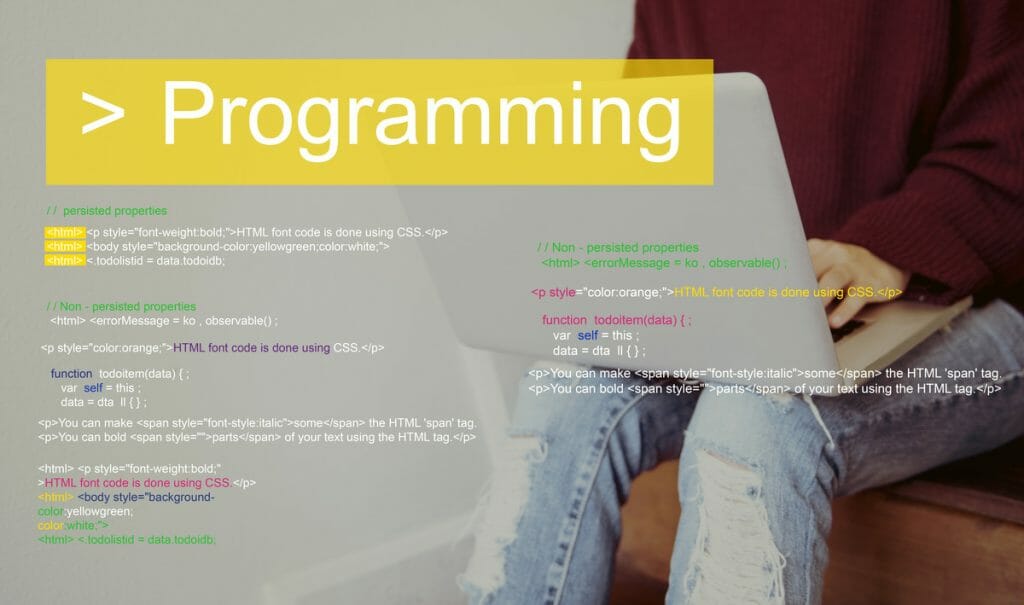|
Tired of Reading? Please listen to the blog
|
Blog Summary
Texila American University in Zambia offers transformative Software Development Studies; with experienced faculty and state-of-the-art facilities, students gain essential skills in programming languages, software engineering, and web development. Specializations in AI and cybersecurity are available. Practical learning is emphasized through hands-on projects, enhancing problem-solving abilities. Modern labs, licensed software, a comprehensive library, and online platforms support students’ educational journey. Scholarships and financial aid options are provided. Enrolling in this program opens doors to diverse career opportunities, equipping students with the necessary skills, knowledge, and industry connections for success in software development.
Introduction
Embarking on a journey into software development can be both exhilarating and intimidating. Whether you’re just dipping your toes into the waters as a novice or aiming to ascend to ninja status, success in this field demands dedication, perseverance, and a hunger for continuous learning. This comprehensive guide delves into the essential steps and strategies to help you excel in your software development studies, from mastering programming languages to honing your problem-solving abilities and navigating the vast landscape of tools and technologies.
Chapter 1: Setting the Foundation
1.1 Embracing the Basics:
Introduction to Programming Concepts To excel in software development, it’s crucial to establish a solid understanding of fundamental programming concepts. Begin your journey by acquainting yourself with the building blocks of programming, including variables, data types, loops, and conditional statements. These concepts serve as the bedrock upon which your programming skills will flourish. Dive into online tutorials and interactive platforms like Codecademy and freeCodeCamp to grasp these concepts hands-only. Choose a beginner-friendly programming language such as Python or JavaScript and immerse yourself in its syntax and core functionalities. Mastering the basics will lay a sturdy foundation for your journey ahead.
1.2 Navigating the Programming Landscape:
Choosing Your Path The programming landscape is vast and diverse, encompassing many languages, frameworks, and paradigms. As a beginner developer, knowing where to concentrate your efforts can be difficult. Take the time to explore different programming languages and their applications, considering factors such as versatility, market demand, and personal interests. Whether you’re drawn to the versatility of Python, the performance of C++, or the ubiquity of JavaScript, selecting a language that aligns with your goals and interests is paramount. Remember, the language you choose is merely a tool—what matters most is your ability to wield it effectively to solve real-world problems and create innovative solutions.

Chapter 2: Mastering the Fundamentals
2.1 Unlocking the Power of Algorithms:
Understanding Efficiency and Optimization Algorithms lie at the heart of software development, empowering developers to solve complex problems efficiently. Delve into the world of algorithms, exploring topics such as sorting, searching, and graph traversal. Understand the importance of algorithmic efficiency and optimization and the role of data structures in algorithm design. Leverage resources like “Introduction to Algorithms” by Cormen et al. and online platforms such as HackerRank and LeetCode to deepen your understanding and practice applying algorithms to solve diverse challenges. Remember, mastering algorithms is not merely about memorizing solutions—it’s about developing a problem-solving mindset and the ability to analyze, optimize, and innovate.
2.2 Harnessing the Power of Data Structures:
Building Strong Foundations Data structures serve as the building blocks of software applications, enabling efficient data storage, retrieval, and manipulation. Explore essential data structures such as arrays, linked lists, stacks, queues, trees, and graphs, understanding their characteristics, operations, and applications. Select the appropriate data structure for a given problem and implement it effectively in your code. Practice implementing data structures from scratch and mastering operations such as insertion, deletion, and traversal. By honing your proficiency in data structures, you’ll confidently enhance your ability to design elegant solutions and tackle complex problems.
Chapter 3: Embracing Version Control
3.1 Git Essentials:
Understanding the Fundamentals of Version Control The foundation of contemporary software development is version control, which allows developers to work together efficiently, monitor changes, and preserve code integrity. Familiarize yourself with Git, a distributed version control system widely adopted in the industry. Learn how to set up Git repositories, stage changes, commit revisions, and synchronize your work with remote repositories using platforms like GitHub and Bitbucket. Explore essential Git commands such as git init, git add, git commit, and git push, mastering their usage in day-to-day development workflows. By embracing Git, you’ll be able to work effectively in collaborative environments and efficiently manage the evolution of your codebase.
3.2 Collaborative Development:
Leveraging Git for Team Projects Effective collaboration is essential for success in software development projects, whether working with a small team or contributing to open-source initiatives. Explore advanced Git features such as branching, merging, and resolving conflicts, understanding how they facilitate parallel development and code integration. Learn how to leverage Git branching strategies like feature and release branches to organize your workflow and streamline collaboration. Practice resolving merge conflicts and conducting code reviews to ensure code quality and maintain project momentum. By mastering collaborative development practices with Git, you’ll become an invaluable asset to any development team and contribute to the success of collective endeavours.
Chapter 4: Exploring Software Development Methodologies
4.1 Agile Principles:
Embracing Flexibility and Iteration Agile methodology has revolutionized how software projects are planned, executed, and delivered, emphasizing flexibility, collaboration, and ongoing development. Become familiar with the fundamentals of Agile, including iterative development, adaptive planning, and customer collaboration. Recognize the obligations of the major players in Agile teams, such as product owners, scrum masters, and development teams. Explore Agile frameworks like Scrum and Kanban, learning how to conduct sprint planning, daily stand-ups, and retrospective meetings to foster transparency and accountability. Adopting Agile principles can improve your capacity to adapt to changing needs, provide value gradually, and satisfy stakeholders with superior software solutions.
4.2 Project Management Tools:
Streamlining Agile Workflows Effective project management is essential for orchestrating Agile development workflows and ensuring project success. Explore popular project management tools such as Jira, Trello, and Asana, understanding how they facilitate Agile practices and enhance team collaboration. Learn how to create user stories, prioritize tasks, and track progress using Agile boards and burndown charts. Explore features such as epics, sprints, and backlogs to manage project scope and schedule effectively. By leveraging project management tools, you’ll streamline your Agile workflows, empower your team to work cohesively, and confidently deliver value to stakeholders.
Chapter 5: Building Projects and Contributing to Open Source
5.1 Putting Theory into Practice:
Building Real-World Projects The actual test of your software development skills lies in your ability to translate theory into practice by building real-world projects. Start small by tackling manageable projects that align with your interests and aspirations, whether developing a web application, creating a mobile app, or building a command-line tool. Apply the concepts and techniques you’ve learned throughout your journey, incorporating best practices such as modular design, code reusability, and documentation. Embrace the iterative development process, soliciting peer feedback and iterating on your designs to refine your solutions. By building projects, you’ll solidify your understanding of software development concepts and showcase your creativity and problem-solving abilities to potential employers and collaborators.
5.2 Contributing to the Community:
Making an Impact through Open Source Open source software embodies the spirit of collaboration, innovation, and collective empowerment, offering a platform for developers to contribute to worthwhile initiatives and have a real influence on the world. Explore open-source repositories on platforms like GitHub, identifying projects that resonate with your interests and expertise. Contribute to projects by fixing bugs, implementing new features, improving documentation, and following project guidelines and best practices. Engage with the open-source Community through forums, mailing lists, and social media channels, sharing your knowledge and learning from others. By contributing to open source, you’ll hone your technical skills and forge valuable connections, gain exposure to real-world development scenarios, and leave a lasting legacy in the global software community.
Conclusion
Becoming proficient in software development demands dedication, continuous learning, and hands-on experience. By mastering fundamental concepts, exploring advanced topics, and actively participating in the developer community, you can progress from a novice to a ninja in this dynamic and rewarding field. Remember to stay curious, embrace challenges, and never stop learning as you embark on your journey to excel in software development studies.











